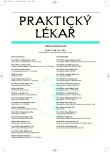Larval therapy to treat wounds – focusing on diabetic foot disease
Authors:
A. Jirkovská 1; R. Bém 1; K. Novotný 2; Řezaninová L.i; K. Cechová 1
Authors‘ workplace:
Centrum diabetologie Institutu klinické a experimentální medicíny, Praha
Přednosta : prof. MUDr. Terezie Pelikánová, DrSc.
1; Kardiochirurgická klinika 2. LF UK a Fakultní nemocnice Motol, Praha
Přednosta: prof. MUDr. Ivan Vaněk, DrSc.
2
Published in:
Prakt. Lék. 2007; 87(9): 559-563
Category:
Case Report
Overview
Debridement is an essential component of wound care as necrotic tissue can impede the healing process. Larval therapy (biosurgery) is a promising addition to a whole spectrum of treatment methods. The main indication for maggot therapy is to disinfect and clean necrotic and infected wounds – e.g. diabetic foot disease (including amputation sites), venous leg ulcers, necrotising fasciitis, traumatic wounds, primary burns, pressure sores. Some evidence, while anecdotal, supports the use of larval therapy against wounds pathogens such as methicillin-resistant Staphylococcus aureus (MRSA) infection. No serious side-effects of this therapy have been observed when appropriately indicated. An overview of the benefits of larval therapy is presented, along with the results of our first practical experiences.
Key words:
larval therapy, diabetic foot disease, maggots, debridement
Labels
General practitioner for children and adolescents General practitioner for adultsArticle was published in
General Practitioner

2007 Issue 9
Most read in this issue
- Hypotermia as an injury, illness, symptom
- Induratio penis plastica – diagnostics and treatment
- Calcium score assessment combined with myocardial perfusion stress test by single photon tomography (SPECT). Two case studies.
- Hantaviruses and related diseases in the Czech Republic
